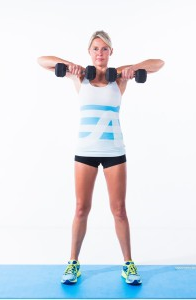All You Need to Know About Muscles
Posted In: Physio Comes To You / General Health / Sports Physiotherapy
Posted In General Health, Sports Physiotherapy
by Liane-Rose on 25/09/2015.
Muscles make us move. It’s as simple as that. Well, not really that simple, but the way that muscles can work and how they provide us with the huge number of different movements we are able to do is quite amazing.
Muscles are highly vascular (have a great blood supply) – how is this helpful?
- Ensures good and consistent blood supply providing them with fuel to work
- Provides high level of oxygen and nutrients so they can work effectively, repair and grow
How do muscles get shorter (concentric activity) and longer (eccentric activity)?
Muscles are made up of many tiny elements that interact with each other to produce a shortening or lengthening of the muscle as a whole. A good example of this is stepping up and down steps. We use our calf muscle as part of this movement. To step up the step, our calf muscle gets shorter and fibres pull past each other to shorten the muscle to produce the energy needed to power us up the step. This type of movement of a muscle is called concentric activity. Conversely, as we step down a step we still use our calf muscle but it lengthens to allow the amount of movement needed to be able to step down. This is still using the muscle but in a different way as it needs to lengthen instead of shorten under tension, whilst still providing us the energy to do the movement well. This type of movement of a muscle is called eccentric activity.
What is isometric muscle activity?
We can also use our muscles without actually shortening or lengthening them and when we do this we produce energy in the muscle but without moving our body part. A good example of this is when we hold a heavy pot of water in the kitchen, we are not moving our arm but it takes effort and energy in the muscles to hold it still. This activity is called isometric activity.
Can we injure our muscles?
Muscles do get injured. They can be pulled, which we call a strain. This happens when we either hit the muscle against something if we use it too aggressively, or if we move too fast or too awkwardly for the muscle to keep up so that some of the fibres tear and injure. Luckily when we fall over it is a large part of the job of the muscles to protect the rest of our body by padding us out a bit, and so they are ready to heal and repair quickly.
What should I do if I injure a muscle?
Their good blood supply allows muscles to heal quickly and effectively, and they do this within a few weeks if they have the right environment to heal. It is always good to ensure that if you have hurt a muscle you are sympathetic to it whilst it is healing. Don’t use it too aggressively in the first few weeks, make sure you eat well, don’t smoke and gently move it regularly to ensure good healing.
How can I strengthen my muscles?
There are many different ways to strengthen muscles. You can use them to shorten as you pull towards you (like a biceps curl), you can use them under lengthening tension like when you step down a step or slowly lower your arm when holding something. You can create huge tension without ever moving the joint or body part and just tensing up the muscle. You can also use jumping or fast exercises to plyometrically load the muscle, and this strengthens it in a totally different way.
What happens if I do not use my muscles?
If you don’t use your muscles for a while they will also add extra bonds between their fibres and this can make them stiffer and harder to move. We feel this as tightness or tension in our muscles.
If you have a problem with a muscle and would like some more advice on how to keep them functioning well, give us a call on 020 7884 0374 or email info@physiocomestoyou.com.

